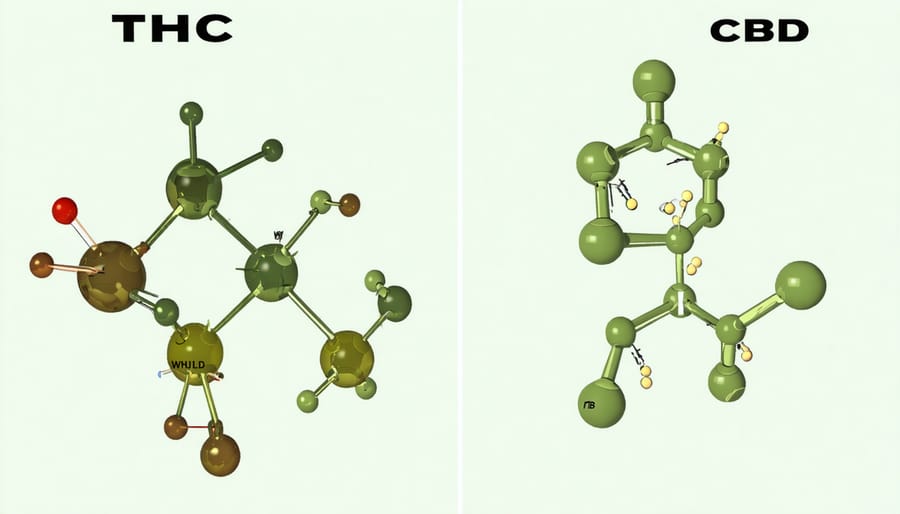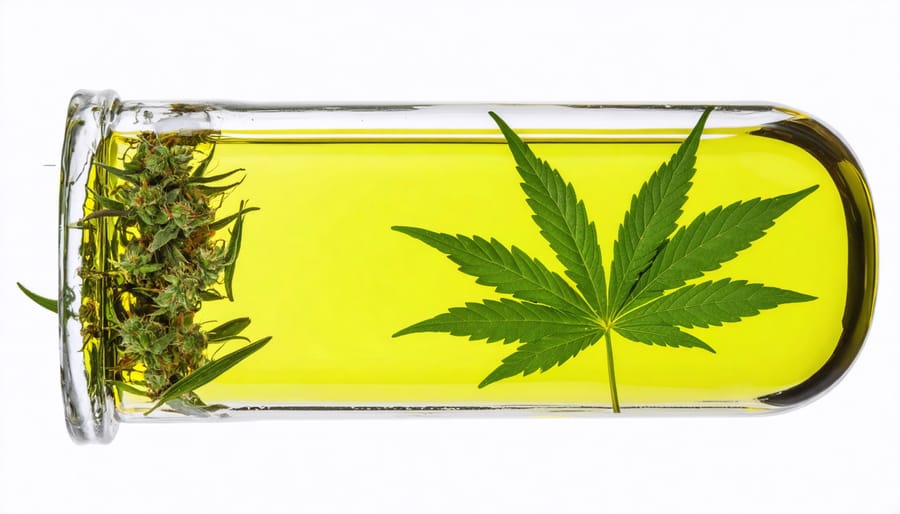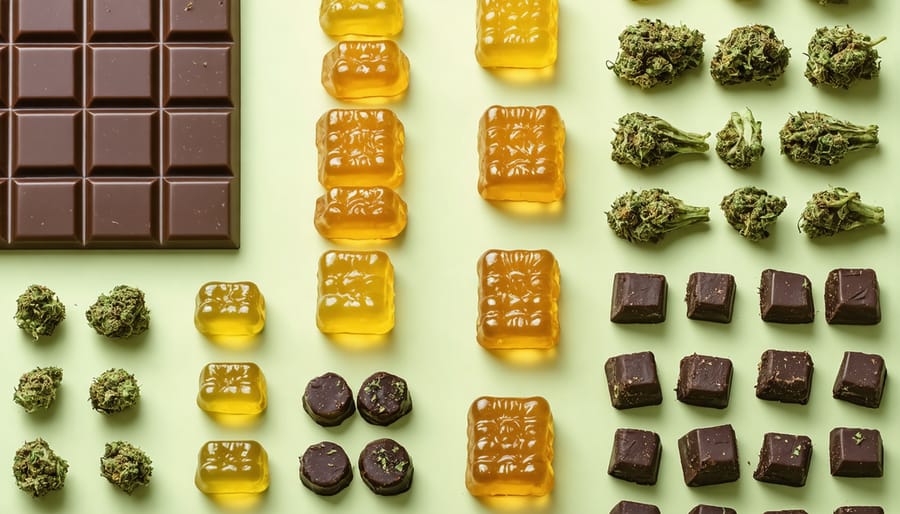The remarkable medicinal benefits of cannabis have transformed countless lives, offering natural relief for chronic pain, anxiety, and sleep disorders. Modern research continues to unlock new therapeutic applications, from managing inflammation to supporting mental health, while premium Budpop flower provides consistent, reliable results for medical patients. Through carefully crafted recipes and precise dosing methods, patients can now harness cannabis’s healing properties in forms ranging from soothing topicals to precisely measured edibles. Whether you’re seeking alternatives to traditional pharmaceuticals or looking to enhance your wellness routine, understanding both the science behind cannabis medicine and practical preparation methods empowers you to make informed decisions about your health. This guide bridges the gap between clinical research and kitchen counter, offering evidence-based insights alongside tested recipes that maximize therapeutic benefits while ensuring safe, effective consumption.
Key Medicinal Benefits of Cannabis
Pain Management and Anti-inflammatory Properties
Cannabis has emerged as a promising option for managing chronic pain and inflammation, with numerous studies supporting its effectiveness. The plant’s active compounds, particularly THC and CBD, interact with the body’s endocannabinoid system to help reduce pain signals and decrease inflammation throughout the body.
Research shows that cannabis can be particularly effective for neuropathic pain, which is often resistant to conventional treatments. Many patients with conditions like fibromyalgia, arthritis, and multiple sclerosis report significant improvements in their pain levels when using medical cannabis. The anti-inflammatory properties of cannabinoids may also help reduce swelling and discomfort associated with various inflammatory conditions.
A 2015 systematic review found that cannabis-based medicines were effective for chronic pain treatment, with patients experiencing meaningful pain reduction and improved sleep quality. While individual responses can vary, many users report being able to reduce their reliance on traditional pain medications, particularly opioids.
Common methods for pain management include:
– Vaporizing cannabis flower for quick relief
– Taking CBD or full-spectrum tinctures
– Using topical cannabis-infused creams and balms
– Consuming edibles for longer-lasting effects
It’s important to note that proper dosing is crucial for effective pain management. Starting with a low dose and gradually increasing it helps identify the optimal amount for individual needs while minimizing potential side effects.
Mental Health Applications
Cannabis has shown promising results in managing various mental health conditions, particularly anxiety, depression, and PTSD. Many patients report significant relief from anxiety symptoms through carefully monitored cannabis use, with specific strains high in CBD often providing calming effects without excessive psychoactive impacts. Studies suggest that cannabis can help reduce racing thoughts and promote relaxation without the side effects commonly associated with traditional anti-anxiety medications.
For depression, certain cannabis varieties may help elevate mood and increase motivation. The plant’s interaction with the endocannabinoid system can influence serotonin levels, potentially offering relief for those struggling with depressive symptoms. However, it’s crucial to work with healthcare providers to determine appropriate dosing and strain selection, as individual responses can vary significantly.
PTSD patients have reported particular success with cannabis treatment, especially in managing nightmares, flashbacks, and sleep disturbances. The plant’s ability to modulate fear responses and emotional memory processing makes it a valuable tool in PTSD treatment protocols. Many veterans and trauma survivors have found relief through medical cannabis programs, reporting improved quality of life and reduced symptom severity.
While cannabis shows promise for mental health applications, it’s essential to approach treatment thoughtfully. Starting with low doses, maintaining open communication with healthcare providers, and regularly monitoring effects helps ensure optimal therapeutic benefits while minimizing potential risks.
Physical Health Applications
Cannabis has demonstrated remarkable therapeutic properties in addressing various physical health conditions, particularly those affecting daily comfort and wellness. For individuals experiencing nausea, whether from chemotherapy, pregnancy, or other medical conditions, cannabis can provide significant relief. THC, one of the primary compounds in cannabis, interacts with the body’s endocannabinoid system to reduce nausea and vomiting sensations.
The plant’s ability to stimulate appetite has proven beneficial for patients dealing with eating disorders, HIV/AIDS, or those recovering from intensive medical treatments. This effect, commonly known as “the munchies,” can help maintain proper nutrition when appetite is compromised. Many users report not only increased hunger but also enhanced enjoyment of food, making meals more pleasurable and manageable.
Sleep disorders, including insomnia and sleep apnea, have also shown positive responses to cannabis treatment. Indica strains, in particular, are known for their sedating effects, helping users achieve deeper and more restful sleep. The plant’s natural compounds can help regulate sleep-wake cycles and reduce the time it takes to fall asleep.
For optimal results, it’s essential to work with healthcare providers to determine appropriate dosing and consumption methods, as individual responses can vary significantly. Starting with low doses and carefully monitoring effects helps ensure the best therapeutic outcomes while minimizing potential side effects.
Understanding Cannabis Compounds

THC vs CBD: What You Need to Know
THC (tetrahydrocannabinol) and CBD (cannabidiol) are the two most prominent compounds found in cannabis, each offering distinct therapeutic properties. While THC is known for its psychoactive effects – creating the “high” sensation – CBD doesn’t alter consciousness but provides numerous benefits of CBD without intoxication.
THC excels at managing chronic pain, reducing nausea, and stimulating appetite – making it particularly valuable for cancer patients undergoing chemotherapy. It can also help with muscle spasms, sleep disorders, and anxiety, though some users may experience increased anxiety at higher doses.
CBD, on the other hand, is praised for its anti-inflammatory, anti-anxiety, and anti-seizure properties. It’s often preferred by patients who need to maintain mental clarity during daily activities. CBD can help with conditions like epilepsy, arthritis, and anxiety disorders without causing cognitive impairment.
When used together, THC and CBD can create what’s known as the “entourage effect,” where the compounds work synergistically to enhance their therapeutic benefits. For example, CBD can help minimize some of THC’s unwanted side effects while maintaining its pain-relieving properties. Understanding these differences helps patients and healthcare providers make informed decisions about which cannabinoid profile best suits specific medical needs.
Terpenes and the Entourage Effect
The entourage effect is one of the most fascinating aspects of medicinal cannabis, where terpenes work alongside cannabinoids to enhance therapeutic benefits. Terpenes are aromatic compounds found naturally in cannabis and many other plants, responsible for distinctive scents and flavors.
Think of terpenes and cannabinoids as members of an orchestra – while each can play beautiful music alone, together they create a magnificent symphony of healing effects. Common cannabis terpenes include myrcene, which promotes relaxation and sleep; limonene, known for mood elevation and stress relief; and pinene, which may help improve focus and memory.
When these terpenes interact with cannabinoids like THC and CBD, they can amplify specific medicinal properties while potentially reducing unwanted effects. For example, the terpene linalool, also found in lavender, can enhance the anxiety-reducing properties of CBD while helping to minimize any THC-related anxiety.
Different cannabis strains contain varying terpene profiles, which is why some varieties might be more effective for pain relief while others better target inflammation or mood disorders. Understanding terpene profiles can help patients select strains that best match their therapeutic needs. Many medical cannabis users report better results when using full-spectrum products that preserve the plant’s natural terpene content rather than isolated compounds.
Therapeutic Cannabis Recipes

Cannabis-Infused Oils and Butters
Creating cannabis-infused oils and butters is a fundamental skill for anyone interested in making their own medicinal cannabis preparations. These infusions serve as versatile building blocks for various recipes, from baked goods to topical applications. Before diving into infusion methods, it’s important to understand the effects of edibles to ensure proper dosing and safe consumption.
For cannabis-infused oil, start with a high-quality carrier oil like coconut, olive, or MCT oil. Decarboxylate your cannabis by spreading ground flower on a baking sheet and heating it at 240°F (115°C) for 30-40 minutes. This crucial step activates the beneficial compounds. Combine the decarboxylated cannabis with your chosen oil in a 1:1 to 1:2 ratio, depending on desired potency. Simmer the mixture in a double boiler for 2-3 hours, maintaining a temperature between 160-180°F (71-82°C). Strain through cheesecloth and store in an airtight container.
Cannabis-infused butter, or “cannabutter,” follows a similar process. Decarboxylate your cannabis as above, then melt unsalted butter in a double boiler. Add the ground cannabis and simmer for 2-3 hours, stirring occasionally. The water method is recommended: add a cup of water to prevent burning and separate it after cooling. Strain the mixture through cheesecloth, allow it to cool in the refrigerator, and remove any excess water.
Both infusions can be stored in the refrigerator for up to two months or frozen for up to six months. Always label your infusions clearly with the date and potency, and keep them out of reach of children and pets.
Anti-Inflammatory Edibles
Inflammation is a common source of chronic pain and discomfort, but cannabis-infused edibles can offer natural relief. Here are three effective anti-inflammatory recipes that combine the therapeutic properties of cannabis with other beneficial ingredients.
The first recipe is a Golden Turmeric and Cannabis Tea Latte. Combine 1 cup of coconut milk, 1 teaspoon of cannabis-infused coconut oil, 1 teaspoon of turmeric, a pinch of black pepper, and honey to taste. The combination of turmeric’s natural anti-inflammatory properties with cannabis creates a powerful therapeutic drink.
For a protein-rich option, try Anti-inflammatory Berry Blast Bites. Mix 1 cup of mixed berries, 2 tablespoons of cannabis-infused honey, 1/2 cup of ground flaxseed, and 1/4 cup of chia seeds. Form into small balls and refrigerate. These bites are perfect for on-the-go relief and packed with antioxidants.
For those who prefer sweeter options, cannabis-infused gummies with ginger and cherry juice provide a tasty way to combat inflammation. The natural compounds in tart cherries work synergistically with cannabis to reduce inflammation markers in the body.
Remember to start with low doses and adjust according to your needs. Each recipe can be customized by varying the cannabis concentration, and it’s always advisable to consult with a healthcare provider about incorporating cannabis edibles into your anti-inflammatory routine. Keep detailed notes about dosage and effects to find your optimal therapeutic level.

Anxiety-Relief Treats
For those seeking natural anxiety relief, CBD-infused treats can offer a gentle pathway to relaxation. These recipes combine the calming properties of CBD with soothing ingredients known for their stress-reducing effects.
Lavender CBD Cookies
These soft, buttery cookies incorporate 10mg of CBD oil per serving alongside dried lavender flowers. The combination promotes relaxation while offering a delightful treat that can be enjoyed any time anxiety strikes. Pair with chamomile tea for enhanced calming effects.
Calming Chocolate Truffles
Dark chocolate naturally contains compounds that boost mood and reduce stress. When combined with CBD oil (15mg per truffle) and a hint of vanilla extract, these rich truffles become powerful anxiety-fighting supplements disguised as luxury confections.
Stress-Relief Gummies
These homemade gummies feature a blend of CBD oil, passion flower extract, and tart cherry juice – all known for their anxiety-reducing properties. Each gummy contains 5mg of CBD, making it easy to control your dosage throughout the day.
Tips for Maximum Benefit:
– Start with a lower CBD dosage and adjust as needed
– Store treats in an airtight container away from light
– Consume 30-60 minutes before anticipated stressful situations
– Keep a anxiety journal to track effectiveness
Remember, while these treats can help manage anxiety, they work best as part of a comprehensive wellness routine that includes proper sleep, exercise, and stress management techniques. Always consult your healthcare provider before starting any new supplement regimen, including CBD-infused treats.

Sleep-Promoting Evening Recipes
For those seeking natural sleep support, these evening-focused cannabis recipes can help you wind down and prepare for restful sleep. Remember to start with low doses and adjust according to your personal needs and tolerance.
Sleepy Time Tea
• 1 cup chamomile tea
• 2-3 drops of cannabis-infused honey
• 1 teaspoon lemon juice
• Optional: 1 drop lavender essential oil
Steep chamomile tea for 5 minutes, add cannabis honey while hot, and stir in lemon juice. Consume 30-60 minutes before bedtime.
Calming Golden Milk
• 1 cup warm plant-based milk
• 1 teaspoon cannabis-infused coconut oil
• ½ teaspoon turmeric
• ¼ teaspoon cinnamon
• Pinch of black pepper
• 1 teaspoon honey (optional)
Blend all ingredients until smooth and drink warm about an hour before bed.
Sleep-Supporting Bedtime Bites
• 1 cup dates
• ½ cup almonds
• 2 tablespoons cannabis-infused coconut oil
• 1 teaspoon vanilla extract
• ¼ teaspoon nutmeg
Process ingredients in a food processor until well combined, form into small balls, and refrigerate. Take one bite 2 hours before bedtime.
These recipes combine traditional sleep-promoting ingredients with cannabis to enhance their relaxation effects. For best results, maintain a consistent bedtime routine and avoid screens for at least an hour before sleep. Always start with a small portion to gauge your response, especially if you’re new to cannabis-infused foods.
When using medicinal cannabis, proper dosing and safety considerations are essential for achieving optimal therapeutic benefits while minimizing potential risks. Start with the lowest effective dose possible and gradually increase as needed, a practice known as “start low, go slow.” For beginners, this might mean starting with 2.5mg to 5mg of THC, while experienced users may require higher doses.
Always consult with a healthcare provider before starting any cannabis treatment, especially if you’re taking other medications. Cannabis can interact with certain pharmaceuticals, affecting their metabolism and effectiveness. Keep detailed records of your dosage, timing, and effects to help fine-tune your treatment plan.
Storage safety is crucial – keep all cannabis products in clearly labeled, child-resistant containers away from direct light and heat. Store them in a secure location out of reach of children and pets. Remember that edibles can take 30-90 minutes to take effect, so resist the urge to consume more before giving the initial dose time to work.
Be mindful of potential side effects, which may include drowsiness, dry mouth, and temporary memory impairment. Never drive or operate heavy machinery while under the influence of cannabis. If you experience any adverse reactions, reduce your dosage or consult your healthcare provider.
For optimal results, maintain consistency in your dosing schedule and product selection. Different strains and consumption methods can produce varying effects, so once you find what works for you, stick with it. Remember that everyone’s endocannabinoid system responds differently to cannabis, so what works for others may not work for you. Listen to your body and adjust accordingly.




